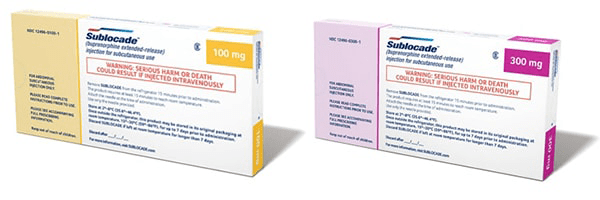According to the American Society of Anesthesiologists, over two million Americans struggle with opioid misuse. Whether it’s a personal battle or the struggle of someone close, the journey through opioid addiction recovery is undoubtedly challenging.
Thankfully, innovative treatments like Sublocade injections are available to aid in this fight.
Sublocade is the brand name for the drug buprenorphine in its injectable form. Unlike traditional opioids, which are often used for pain relief, buprenorphine is a partial opioid agonist. This means it activates opioid receptors in the brain but to a lesser extent, reducing the likelihood of experiencing a “high” while using the medication.


Sublocade serves as a monthly injection treatment that helps manage withdrawal symptoms by acting as a partial opioid agonist. By binding to the brain’s opioid receptors, Sublocade blocks other opioids from triggering the euphoric effects they typically would, thus helping to diminish cravings significantly.

Administered as a monthly injection, Sublocade is a Schedule III controlled substance. Treatment must be initiated only by certified providers, such as those at SF Suboxone, who are specially trained and authorized by the government.
Patients must first be stabilized on an oral form of buprenorphine, such as Suboxone, which is used daily for at least a week before transitioning to Sublocade injections. Unlike Suboxone, which also contains naloxone to counteract overdoses, Sublocade consists solely of buprenorphine.

Sublocade injections are administered into the abdomen’s subcutaneous tissue, forming a depot that slowly releases medication over the course of a month. This controlled release helps maintain consistent therapeutic levels of buprenorphine, aiding in addiction management.
It is crucial to avoid manipulating the injection site to prevent displacing the depot, which could interfere with the medication’s effectiveness or cause discomfort.

Clinical trials indicate that Sublocade effectively maintains opioid abstinence, with significant differences in success rates between treatment and placebo groups. During a six-month study, 30% of participants receiving Sublocade avoided opioid use entirely, compared to only 2% in the placebo group.

When administered under professional supervision, Sublocade is generally safe. Common side effects include site irritation, constipation, nausea, headache, dizziness, and drowsiness. More severe but rare side effects like pulmonary embolism, slowed breathing, serious allergic reactions, and liver toxicity need to be carefully monitored.

Taking Sublocade safely means, first, working with a certified clinic. A qualified provider, like the doctors at San Francisco Suboxone, will help you transition from oral Suboxone treatments to monthly Sublocade injections. They’ll also take care to leave adequate time between injections and place the injections properly.
Still, there are steps you can and must take to protect yourself and enhance your treatment’s effectiveness.

It is vital to disclose all medications to your healthcare provider because certain drugs can adversely interact with Sublocade. Antidepressants, muscle relaxants, sedatives, and some over-the-counter medications could lead to severe conditions such as serotonin syndrome.

Mixing Sublocade with alcohol can be extremely hazardous and potentially fatal. Avoid alcohol consumption during treatment to prevent serious complications.

Integrating Sublocade treatment with counseling and support groups maximizes the effectiveness of the recovery process. This holistic approach addresses both the physical and psychological aspects of addiction.

Recovery from addiction is a journey filled with challenges, but also hope. At SF Suboxone, we blend cutting-edge medication treatments with comprehensive counseling to offer a path to recovery and hope. Our team is committed to supporting each patient through their unique recovery journey.
Contact SF Suboxone today to learn more about how we can help you or your loved one start the journey toward recovery.
